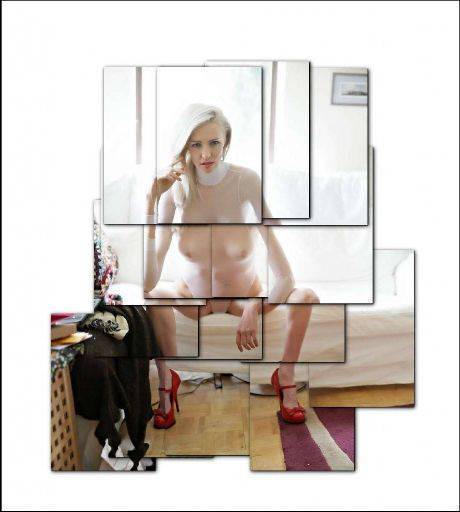Homage to David Hockney

THINKING:
David Hockney developed his "joiner" technique as a way of exploring the idea of cubism in photography. Both are often misunderstood. The idea though is simple, that when we spend time with people we see them from many different angles, many different distances and at different times.
The idea of both cubism and the "joiner" is that a single image captures some elements of those different perspectives and different times.
SEEING:
This image of Zara is a simpler version of that idea. There is no real attempt to show either different angles or different times. However, I have dropped in some slightly different camera positions and focal lengths.
A joiner does not have to fill its larger frame. White space around the image helps reinforce the nature of the smaller images.
The individual segments do not need to be square as they are seen here. They can be rotated away from the horizontal.
DOING:
You want your exposure to remain constant throughout the series. Therefore, if you are shooting from the sides as well, then find an exposure level that is acceptable for all the angles you are going to shoot.
While different focal lengths, distances and angles all add to the picture, it is only within bounds. Do not vary too far from the mean. Otherwise, the joiner will become disjointed when you put it together.
share:
This is an excerpt from "Art Nude Photography Explained" which shows you how to create nude images and how to read and evaluate art nude photographs
It is available on Amazon
or on
the store